#Maurizio Millenotti
Text


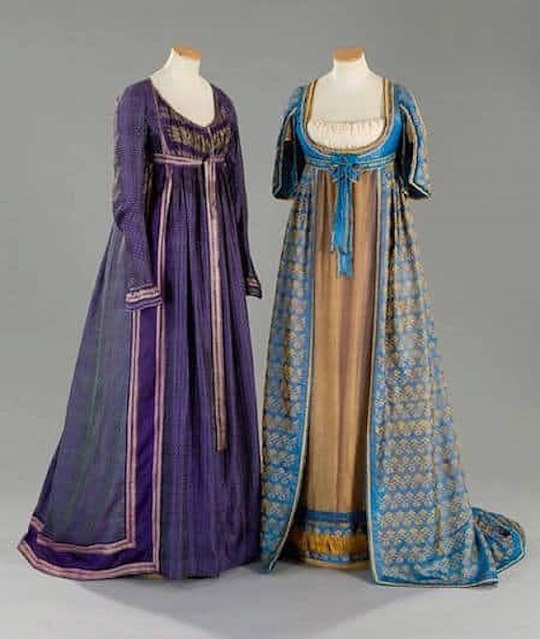



One Dress a Day Challenge
Anything Goes December
Immortal Beloved / Valeria Golino as Giulietta Guicciardi
The combination of bronze and deep turquoise in this gown is quite striking, especially when you add the shimmery wrap. I'm not an expert on the period, but I get the impression this sort of saturated color is more common in continental Europe than in Britain during this time period.
Costumes for this film were designed by Maurizio Millenotti.
#immortal beloved#anything goes december#valeria golino#one dress a day challenge#one dress a week challenge#19th century costumes#regency costumes#regency era#1994 movies#1994 films#period film#maurizio millenotti
42 notes
·
View notes
Photo

Sophia Myles as Isolde in ‘Tristan + Isolde’ (Film, 2006).
#sophia myles#isolde#tristan and isolde#perioddramaedit#fashion#blonde hair#blue eyes#5th century#Maurizio Millenotti
165 notes
·
View notes
Text


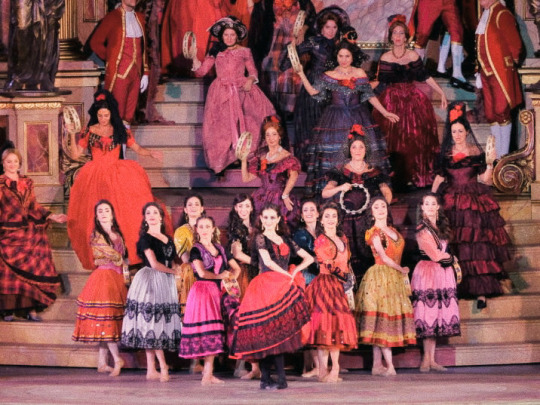
dancers on set of Franco Zeffirelli’s “La Traviata” (1983), costumes by Piero Tosi / Arena di Verona dancers on stage for Franco Zeffirelli’s production of “La Traviata” (2019-2023), costumes by Maurizio Millenotti
6 notes
·
View notes
Text
'Ripley is the story of a con man who assumes the identity of a wealthy American expat. But, as star Andrew Scott told Netflix, it’s also “a story about art and beauty and sensuality… helped by the great beauty of Italy.”
Based on the 1955 Patricia Highsmith novel The Talented Mr. Ripley, the limited series follows charming con artist Tom Ripley (Scott) on a trip to Italy in the 1960s bankrolled by a shipping magnate to retrieve his wayward son, Richard “Dickie” Greenleaf (Johnny Flynn). Tom ingratiates himself into Dickie’s life — much to the chagrin of Dickie’s suspicious girlfriend, Marge Sherwood (Dakota Fanning) — and soon is on the run from police while posing as Dickie in Rome.
Creator Steven Zaillian’s team of talented artists — production designer David Gropman, director of photography Robert Elswit, and costume designers Maurizio Millenotti and Giovanni Casalnuovo — meticulously re-created a 1960s aesthetic. Below, find out how they fashioned such a stunning period setting in Ripley.
THE LOCATIONS
Ripley’s filming locations read like a dream vacation: Venice, Rome, Naples, Palermo. Zaillian and Gropman drove the length of the Amalfi Coast, going from Salerno to Sorrento, “looking for the town we imagined Dickie Greenleaf settled in,” Zaillian told Netflix. “Most have been too modernized or gentrified for a story taking place in 1960, but there was one we came upon, a village of about 800 people called Atrani, that we found perfect.”
When the series finally filmed in 2021, it was the height of the Covid pandemic, so “there were no tourists,” said Zaillian, “which made it feel all the more like we’d gone back in time.”
Beyond the postcard-perfect vistas provided by the location, Gropman had more than 200 sets and locations to design. His researchers worked in New York, London, and Italy to make sure the plans were as accurate as possible. While Gropman and Zaillian visited several Roman apartments, the one used in the show was a set. But those real estate tours were inspirational.
“The sofa in Tom’s Rome apartment was the sofa that we saw in a villa in Rome that we both fell in love with, so we just built an exact replica,” Gropman told Netflix. “The leather chair that Ravini sits in in Tom’s apartment? I was walking by a shoe store in Rome, and there was this beautiful old leather chair. We couldn’t get that chair, but we worked with the most wonderful Italian decorator to source something. She made all of these interiors come to life in a really spectacular way.”
THE STYLE
Unsurprisingly, the costumes were as meticulously researched as the locations. Designers Millenotti and Casalnuovo created “thick binders” of images, arranged by region and year, to show Zaillian their vision of what the costumes would look like. The finished products included vintage pieces as well as outfits they crafted themselves. “From the feel of La Dolce Vita in Rome to a more working-class wardrobe in Palermo or Atrani, it’s always accurate,” said Zaillian. “And even though it was always the intention for Ripley to be in black-and-white, I asked them to clothe no one in colors, which limited them in a way that made their job even harder than it already was.”
Millenotti and Casalnuovo initially worried about the black-and-white restriction, but once they got comfortable, they told Netflix, “[We] learned how to express ourselves and build the characters only with a thousand shades of gray. It was the greatest challenge we ever faced as costume designers.”
The quiet luxury of Dickie Greenleaf
The object of Tom’s admiration, Dickie, is the heir to a shipping fortune — someone who grew up around wealth. For him, luxurious fabric and timeless style is second nature. For Flynn, the “beautifully tailored” costumes helped him get into character. “The way that the trousers sit on your waist and everything like that helps when you’re playing in this period — the grace that the clothes allow you,” he told Netflix.
Tom’s style evolution
Tom, on the other hand, is quite uncomfortable in the moneyed world he steps into, because he’s only crafting a facade. He’s a quick study, but he gets plenty of things wrong, too, like the purple paisley robe he brings to Dickie from New York. “Tom doesn’t come from the culture that Dickie comes from,” Flynn tells Tudum. “Dickie can spot something that’s unfashionable a mile off. And his taste — not necessarily in terms of his own paintings, but everything else — is meticulous.”
Was the robe really so terrible, though? “It was pretty garish,” says Flynn. “But it wasn’t that bad. It was something that your grandfather would’ve worn maybe — or certainly mine — and felt very suave.”
But as Tom becomes more comfortable amid such affluence, he begins to understand how fashion helps him fit in. “Ripley’s transformation is about seeing a subtle change but not being too brash about it,” said Scott. “We see there are different Toms: We’ve got New York Tom, Amalfi Tom, Tom as Dickie, and Venice Tom.”
1960s DESIGN
Tom is fixated on Dickie, and that singular focus extends to the objects in Dickie’s orbit, all of which are in 1960s midcentury style. Tom pockets a pen off of Dickie’s desk before returning it, a sign of what Scott calls Tom’s “almost sensual relationship with things.”
All of those meticulously curated objects — Dickie’s ring, his typewriter, even a hefty glass ashtray — become fixations for the camera, too. Scott said on Netflix’s Skip Intro podcast that Tom “loves [things], and you feel like he protects them. The camera is trained on these things so much. I suppose we as an audience are invited to just really appreciate them.”
THE ART
Life imitating art
The final episode opens with a flashback of sorts, but not to another period in Tom’s life. Instead, we travel 350 years back in time for a glimpse at the life of famed Italian painter Caravaggio. Tom is enamored by Caravaggio’s gruesome, dramatic paintings, but the two men have more in common than an appreciation for beauty and art.
“Caravaggio is another man who lived in Rome who murdered somebody and then was on the run for it for the rest of his life,” Zaillian tells Tudum. “That little parallel I thought was interesting. For the final episode, I thought it would be a lot of fun to suddenly flash back 350 years and have people say, ‘Are we watching the same show?’ And then realize, ‘Oh, yes, Caravaggio. I understand this.’ ”
Art as status symbol
For all of Dickie’s wealth, there’s one thing his money can’t buy: talent. While Dickie might enjoy the finer things in life, his artistic pursuits are a vanity project. “There’s some stuff that’s passable in the landscapes,” says Flynn, “but we all found it very funny that it was [mostly] the really objectively bad paintings that you see.”
Is Dickie a good painter? Emphatically, no. “Here’s the thing: The story is so much from Tom’s perspective, you should be in his head going, ‘Oh my God, that’s disgusting,’ ” says Flynn. “And the same with Marge’s writing as well. I think it works well if we, through Tom’s perspective, think of these people as fooling themselves and that their whole life is a bit of a bubble and an illusion and the lie that they’ve created about being these artists in exile. Yeah, the paintings were pretty bad!”
BLACK AND WHITE
AND SHADES OF GRAY
One of the most distinctive — and perhaps most period-appropriate — aspects of Ripley is its black-and-white palette, something Zaillian had planned from the beginning.
“I never saw it as some sunny, colorful postcard of a story but rather as the foreboding suspense story that it is,” he told Netflix. “It takes place in the winter of 1960 and, like many of Highsmith’s stories, has a film noir quality to it. Black-and-white can be striking in a way color can’t be, and I’m grateful Netflix agreed.”
A frame within a frame
Zaillian and Elswit had worked together on the miniseries The Night Of, so Zaillian knew his director of photography would be up for the challenge. “He loved the idea of shooting in black-and-white and brought to that seemingly simpler palette a depth to the photography that’s more evocative than color,” Zaillian said.
Another of Elswit’s choices brought even more depth to the visuals — the shots that frame Tom within another frame, including windowpanes, mirrors, doorways, and other enclosed perspectives. They suggest that, as viewers, we’re watching Tom fit himself into a box.
The deeper meanings found within Tom Ripley’s story are also imbued in the cinematography. “This show is so much about light and dark and contrasts and the underbelly and what’s going on under the surface,” said Fanning. “I love that Steven and Robert are really playing with that through the lighting and the sets, and the color palette and the tone.”
Take, for example, the closing montage that focuses on a painting from Picasso’s cubist period. “Cubism is all about deconstructing usually a human figure into parts, so that we can somehow see them more clearly when we’re not distracted by them all being in the right place,” Zaillian tells Tudum. “I felt like at the end, to see these pieces of Tom, these different personas of Tom, these different identities that he assumed, that we were actually seeing him fragmented like the cubist painting that’s right in front of him.”'
#Robert Elswit#Steven Zaillian#Netflix#Ripley#Andrew Scott#Dickie Greenleaf#Johnny Flynn#Caravaggio#Marge Sherwood#Dakota Fanning#Maurizio Millenotti#Giovanni Casalnuovo#Rome#Naples#Venice#Palermo#David Gropman#Atrani#Amalfi Coast#The Night Of#Cubism
1 note
·
View note
Text

Period dramas dresses tournament: Grey/Silver dresses-
Round 1 Round 2 Round 3 Round 4 Semifinals Finals
Winner: Isolde's dress, from Tristan & Isolde
Costume designer: Maurizio Millenotti
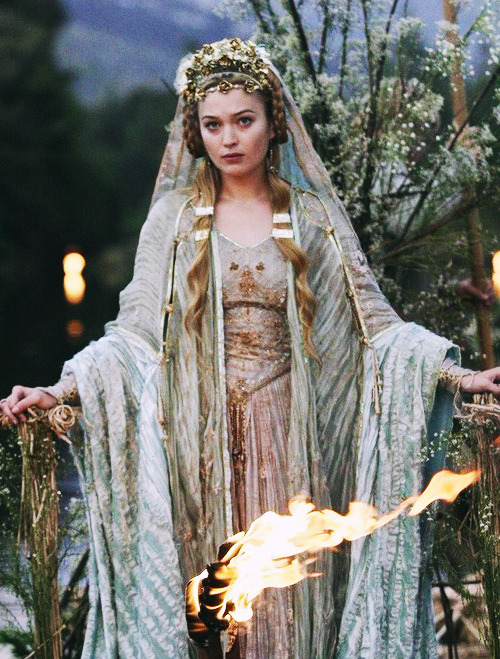
110 notes
·
View notes
Text







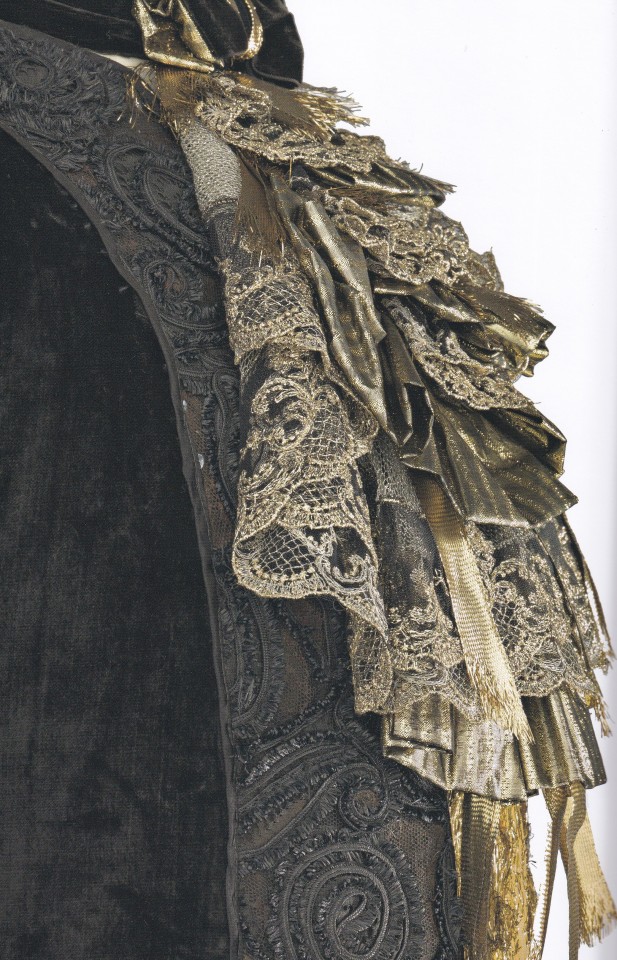



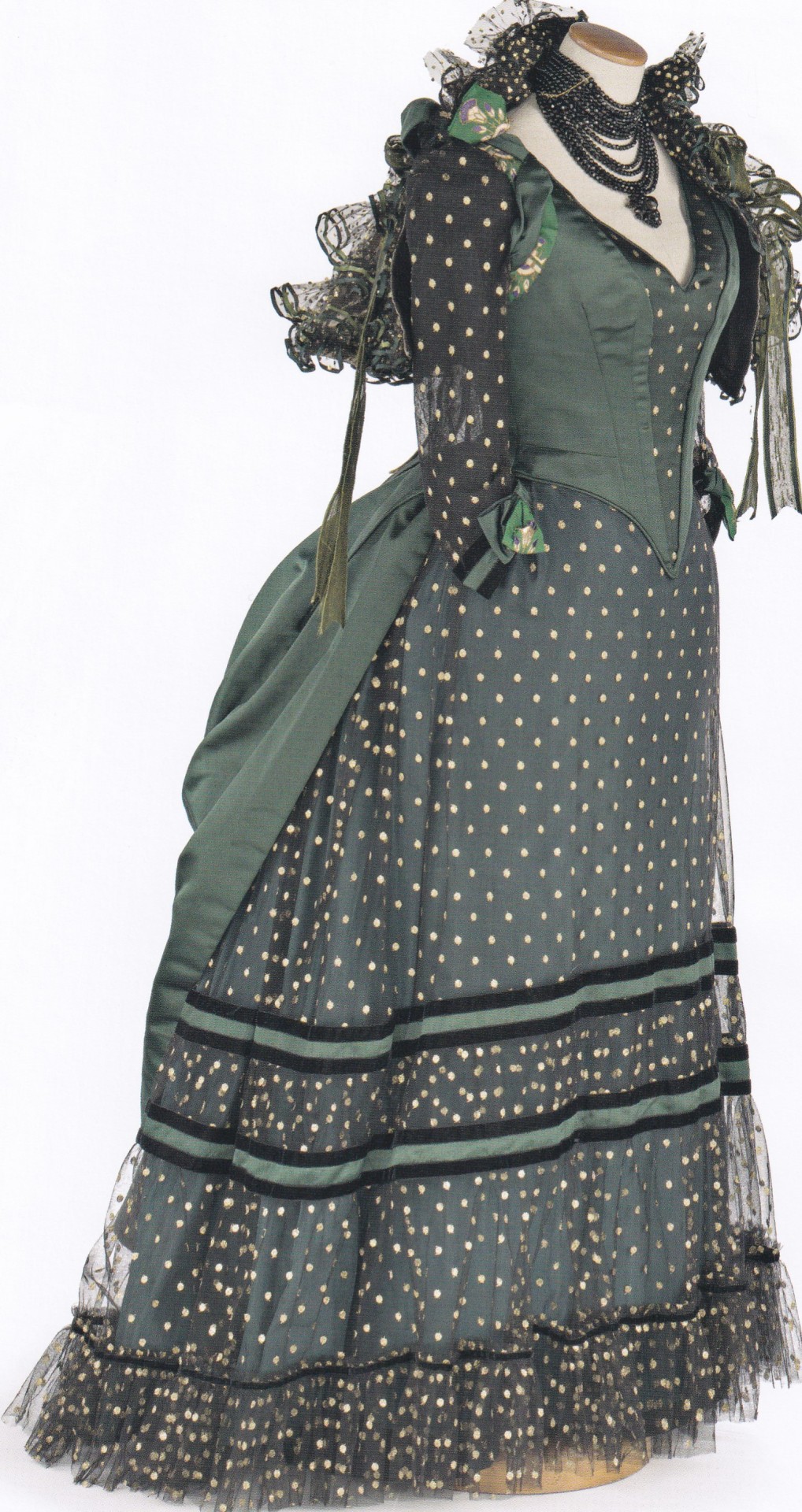


Umberto Tirelli Ritorno a Gualtieri
a cura di Gabriella Pescucci
Corsiero Editore, Reggio Emilia, seconda edizione 2019, 136 pagine, 21x30,5cm, ISBN 978-88-98420-94-0
euro 35,00
email if you want to buy [email protected]
Catalogo dell’omonima mostra, curata dalla costumista premio Oscar Gabriella Pescucci, a Palazzo Bentivoglio di Gualtieri (Reggio Emilia) con oltre una trentina di costumi realizzati dalla Sartoria Tirelli per spettacoli teatrali e film.
Questa mostra segna il ritorno simbolico di Umberto Tirelli al suo paese d’origine, ma ne attraversa nel contempo l’intera carriera, attraverso le sue stesse parole che descrivono l’amicizia con Romolo Valli e Gian Luigi Pizzi, con Luchino Visconti e Danilo Donati, con Piero Tosi e Federico Fellini. La storia della Sartoria Tirelli non si esaurisce però con la figura di Umberto Tirelli: la sua eredità di valori e di dedizione al lavoro continua tuttora, attraverso la collaborazione con i maggiori costumisti del panorama internazionale.
Nel catalogo sono presenti i costumi di Milena Canonero, Massimo Cantini Parrini, Danilo Donati, Alessandro Lai, Gitt Magrini, Maurizio Millenotti, Ursula Patzak, Gabriella Pescucci, Pier Luigi Pizzi, Carlo Poggioli, Ann Roth, Piero Tosi e Mariano Tufano, realizzati per i film e gli spettacoli teatrali di Sofia Coppola, Fanny Ardant, Matteo Garrone, Federico Fellini, Ferzan Ozpetek, Bernardo Bertolucci, Paolo Virzì, Anthony Minghella, Martin Scorsese, Luchino Visconti, Giorgio Diritti, Carlo Hintermann, Mauro Bolognini e Giorgio De Lullo.
14/03/24
#Umberto Tirelli#Ritorno a Gualtieri#exhibition catalogue#Palazzo Bentivoglio Gualtieri 2018#SartoriaTirelli#theatrical & movie costumes#fashionbooksmilano
10 notes
·
View notes
Photo


I don't do movie costumes very often beyond the Golden Age, but this one couldn't pass me by. This frocking fabulous number was worn by Anna Galiena in 1992's L'Atlantide. It's designed by Maurizio Millenotti and it's stunning. Via Tirelli Costumi Roma.
3 notes
·
View notes
Text

Edwin Alexander Francis plays Montano in "Otello" (Giuseppe Verdi) film-opera, directed by Franco Zeffirelli (1986)
Here are a few backstage snapshots after a days filming and rehearsing at Barletta Castle, Apulia with the stars Justino Diaz (Jago) and Placido Domingo (Otello) with his make-up still on :-)


..and another couple on the night set "Otello", Act I, portside, in Heraklion, Crete (with the Italian 'maestri d'armi' / stunt men ->
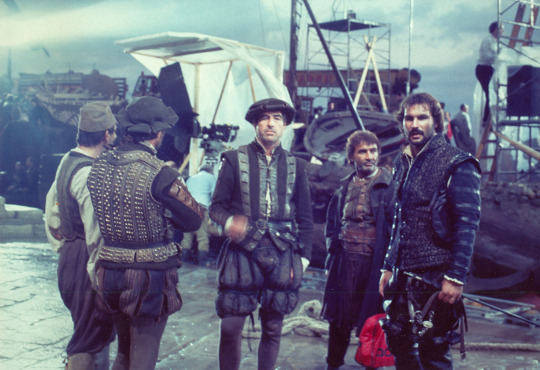

...and in one of my 'Montano' costumes (by Anna Anni + Maurizio Millenotti)
0 notes
Video
youtube
E la Nave Va (And the Ship Sails On) 1983- Federico Fellini
TONINO GUERRA
FEDERICO FELLINI
1914 . PIROSCAFO GLORIA N. MOLO 10
PORTO DI NAPOLI
ANDREA ZANZOTTO
FRANCO CRISTALDI
Fotografia Giuseppe Rotunno
Montaggio Ruggero Mastroianni
Effetti speciali Adriano Pischiutta, Valeriano Trubbiani
Musiche Gianfranco Plenizio
Scenografia Dante Ferretti, collaboratore Valeriano Trubbiani[2]
Costumi Maurizio Millenotti
Freddie Jones: Orlando
Barbara Jefford: Ildebranda Cuffari
Victor Poletti: Aureliano Fuciletto
Peter Cellier: Sir Reginald Dongby
Elisa Mainardi: Teresa Valegnani
Norma West: Lady Violet Dongby
Paolo Paoloni: Maestro Albertini
Sara Jane Varley: Dorotea
Fiorenzo Serra: Granduca di Harzock
Pina Bausch: Principessa Lherimia
Pasquale Zito: Conte di Bassano
Antonio Vezza: Comandante della nave Roberto De Leonardis
Luigi Uzzo: Ufficiale di bordo
Philip Locke: Primo ministro conte von Huppenback
Colin Higgins: Capo della polizia
Janet Suzman: Edmea Tetua
Vittorio Zarfati: 2º maestro Ruberti[1]
Fred Williams: Sabatino Lepori
Ugo Fangareggi: barista
Doppiatori italiani
Ferruccio Amendola: Orlando
Rita Savagnone: Ildebranda Cuffari (dialoghi)
Mara Zampieri: Ildebranda Cuffari (canto)
Alessandro Haber: Aureliano Fuciletto
Oreste Lionello: Sir Reginald Dongby/Capo della polizia
Giancarlo Sbragia: Maestro Albertini
Massimo Giuliani: Conte di Bassano
Sergio Rossi: Comandante della nave Roberto De Leonardis
Pino Colizzi: Sabatino Lepori
E la nave va è un film del 1983 diretto da Federico Fellini.
1914: il piroscafo "Gloria N." salpa dal molo n. 10 di un non meglio definito porto di Napoli con a bordo le ceneri della "divina" cantante lirica Edmea Tetua. Meta della crociera: l'isoletta di Erimo nel Mar Egeo, nelle cui acque - per ottemperare alle ultime volontà del soprano - le ceneri dovranno essere sparse.
A bordo della nave, celebrità varie, nobili e amici della defunta artista, descritti con un'ironia comprensiva e impietosa al tempo stesso dal giornalista Orlando, a bordo per redigere una cronaca dell'evento. A bordo è presente persino un rinoceronte, ammalato di tristezza d'amore, che saltuariamente viene visitato dai passeggeri.
Il corso della Storia irrompe però con forza: a Sarajevo il granduca Ferdinando è ucciso e scoppia la prima guerra mondiale; contemporaneamente, il comandante della nave si trova costretto a dover soccorrere dei naufraghi serbi.
In vista della meta, il piroscafo italiano incrocia una corazzata austriaca e viene colpito ed affondato.
Nell'ultima scena il giornalista Orlando informa il pubblico del fatto che i passeggeri non sono tutti morti[3]:
Un idrovolante ha recuperato i superstiti della scialuppa Aurora [...] La scialuppa Stella del nord è miracolosamente arrivata ad Ancona [...] Per quanto mi riguarda io ho una grande notizia da darvi: Lo sapevate che il rinoceronte dà un ottimo latte?
Nel dir questo il giornalista si scherma le labbra con la mano per non farsi sentire dal rinoceronte, il secondo passeggero della barca, che finalmente sereno, mangia un ciuffo d'erba.
❤️❤️❤️❤️❤️❤️❤️❤️❤️❤️❤️❤️❤️❤️❤️❤️❤️❤️❤️❤️ ❤️❤️
#gustavopetro
#colombia
#DONALDTRUMP
#TRUMP
#BOLSONARO
#DORIGHEZZI
#STRISCIALANOTIZIA
#FRANCESCO
#RUTELLI
#PROPAGANDALIVE
#ELUANA
#ENGLARO
#ELUANAENGLARO
#CRISTIANODEANDRE
#twitter
#facebook
#skyrock
#linkedin
#instagram
#okru
#tiktok
0 notes
Text
Jessica Pratt nella Traviata al 100/o del Verona Opera Festival
Jessica Pratt torna all’Arena di
Verona da protagonista dopo il successo della serata-evento con
Placido Domingo: domani sera sarà per la prima volta in Arena (e
in Italia) Violetta nella Traviata, ultimo allestimento firmato
da Franco Zeffirelli con i costumi di Maurizio Millenotti, le
luci di Paolo Mazzon e le coreografie di Giuseppe Picone.
Il soprano, allieva di Renata Scotto, calca il…
View On WordPress
0 notes
Photo

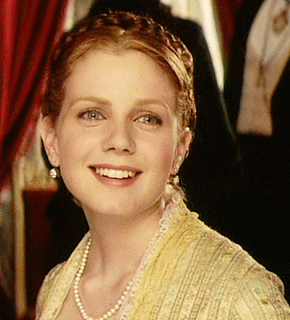




Anna Karenina (1997).
Costume design by Maurizio Millenotti.
#Anna Karenina#Mia Kirshner#Anna Karenina 1997#1990s#90s movies#my gifs#Maurizio Millenotti#period costumes#1800s#costumesource#periodedit#perioddramaedit#userthing#filmtvcentral#userbbelcher#cinematv#cinemapix#userladiesofcinema#userstream#costumeedit#dailywomen#femaledaily
167 notes
·
View notes
Text

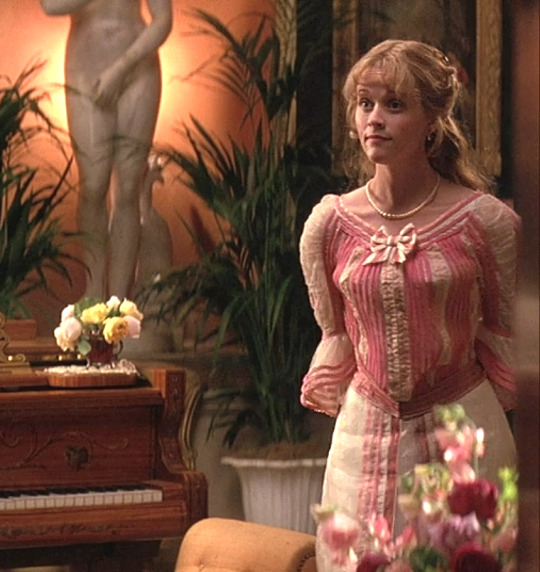

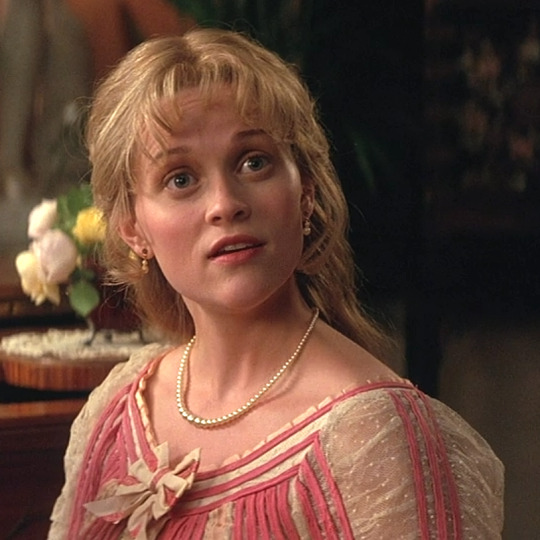

One Dress a Day Challenge
March: Pink Redux
The Importance of Being Earnest / Reese Witherspoon as Cecily Cardew
This dress is mostly seen from the waist up, but we get enough of a glimpse of the skirt to tell that it's mostly white with pink stripes down the front, and you can just barely make out a pink stripe around the bottom as well in the rear-view seated shot. The top appears to be mostly white or very pale pink with sheer sleeves (possibly organdy) and liberally applied pink ribbons.
Although the play was written in 1895, the costuming in this movie seems to be from about ten years later. The costume designer was Maurizio Millenotti.
#the importance of being earnest#pink dresses#pink dress#reese witherspoon#one dress a day challenge#one dress a week challenge#2002 films#2002 movies#1900s style#1900s fashion#edwardian era#edwardian style#edwardian fashion#cecily cardew#maurizio millenotti#20th century costumes#pink redux
37 notes
·
View notes
Text
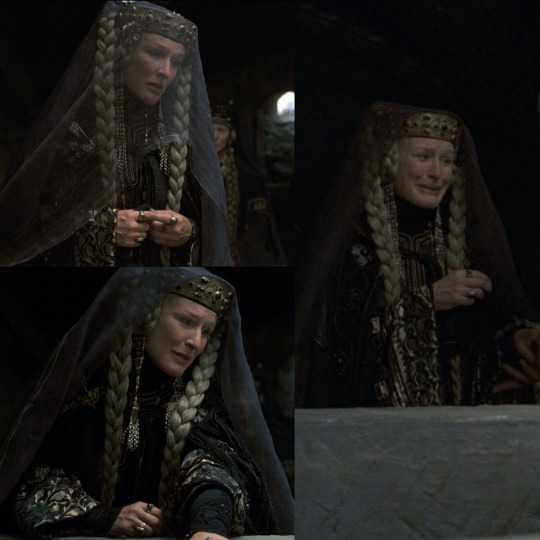






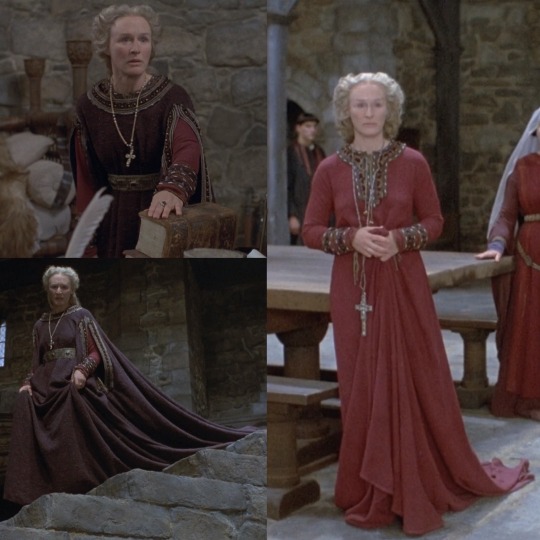
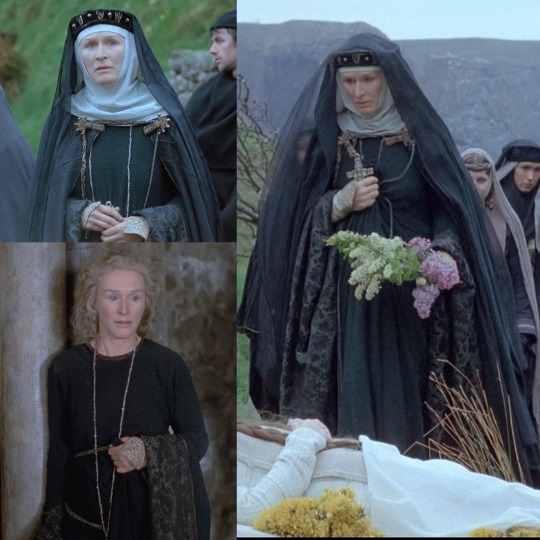

Queen Gertrude's costume comes from the 1990 film Hamlet. The costume designer is Maurizio Millenotti.
#hamlet#glenn close#Maurizio Millenotti#middle ages#12th century#13th century#14th century#15th century#costumes#costume design#costume designer#costume drama#history of fashion#historical costume
127 notes
·
View notes
Text



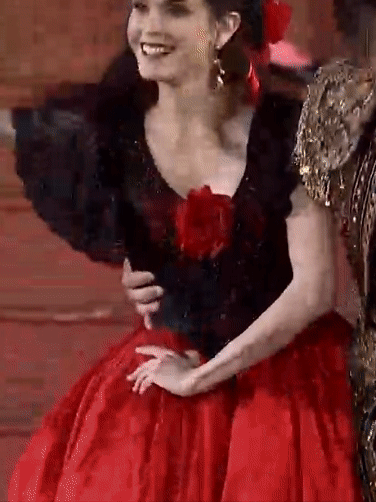
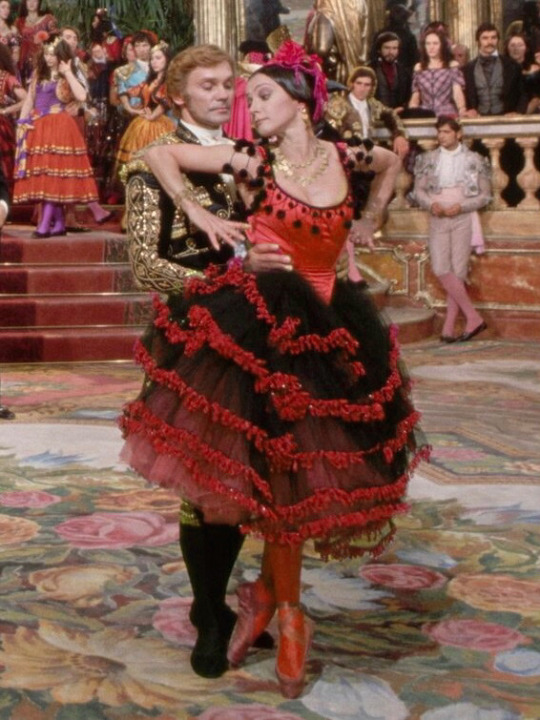
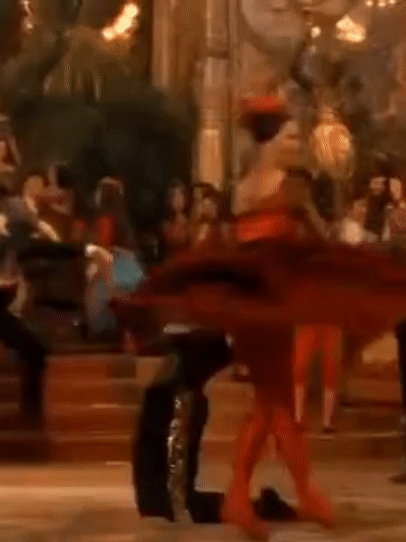


Principal dancers’ costumes for La Traviata: Arena di Verona 2019 production designed by Maurizio Millenotti / Franco Zeffirelli 1982 movie designed by Piero Tosi
1 note
·
View note
Text
'Few films are as ravishing and effortlessly stylish as Anthony Minghella’s The Talented Mr Ripley, the glorious 1999 thriller which sees the likes of Matt Damon, Gwyneth Paltrow, Jude Law, Cate Blanchett and Philip Seymour Hoffman swanning around ’50s Italy. Friendships are forged through deception, obsessions develop, jealousies arise and the net slowly closes in on our titular anti-hero – and all the while, the fashion, courtesy of costume designers Ann Roth and Gary Jones, is sensational.
There’s exceptional menswear, of course – louche shirting, perfectly tailored suits, Gucci loafers and signet rings, as worn by Law’s Dickie Greenleaf and then Damon’s Tom Ripley, as he adopts his former friend’s identity – but the two sartorial scene-stealers are, undoubtedly, Paltrow’s sweet-natured Marge Sherwood and Blanchett’s gregarious socialite Meredith Logue.
The former’s uniform of crisp white shirts, tortoiseshell headbands and floral midi-skirts have since become synonymous with laidback summer holiday style, and symbolise her youthful exuberance and naivete. Then, as the seasons change, the plot takes a darker turn and she grows suspicious of Tom, she begins covering up – firstly in sumptuous knits and then, as the story takes her from southern Italy to Rome and then to Venice, sleek trenches and a showstopping leopard-print number with a matching hat.
This incredible fashion legacy poses a challenge for Ripley, Netflix’s upcoming, Steven Zaillian-directed retelling of the Patricia Highsmith classic, this time starring Andrew Scott, Dakota Fanning and Johnny Flynn. Filmed in luminous black and white, in place of Minghella’s sun-soaked palette of pastels, it, perhaps wisely, takes an entirely different approach, with costumers Giovanni Casalnuovo and Maurizio Millenotti dressing its stars in more subdued and pared back ensembles – think artfully crumpled cotton shirts, dark tweed, Aran knits and boatneck tops which, for Fanning’s take on Marge, are paired with a slicked back low bun and minimal make-up. It’s simple, certainly, but also impossibly chic...'
#The Talented Mr Ripley#Andrew Scott#Netflix#Steven aillian#Johnny Flynn#Dakota Fanning#Anthony Minghella#Patricia Highsmith#Giovanni Casalnuovo#Maurizio Millenotti#Matt Damon#Jude Law#Cate Blanchett#Dickie Greenleaf#Marge Sherwood#Gwyneth Paltrow#Meredith Logue#Phillip Seymour Hoffman#Ann Roth#Gary Jones
0 notes
Photo


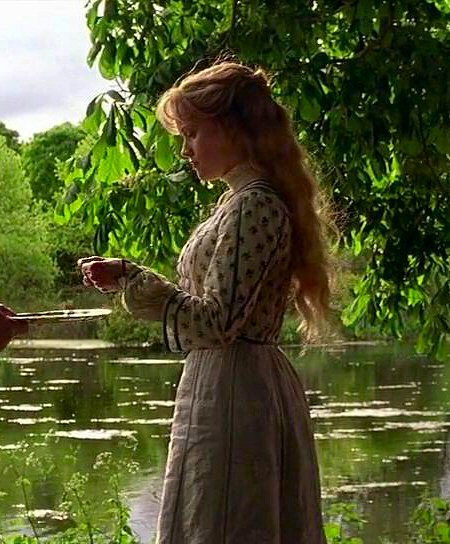






Cecily (Reese Witherspoon) Blue dress.. The Importance Of Being Earnest 2002).. Costume by Maurizio Millenotti.
58 notes
·
View notes